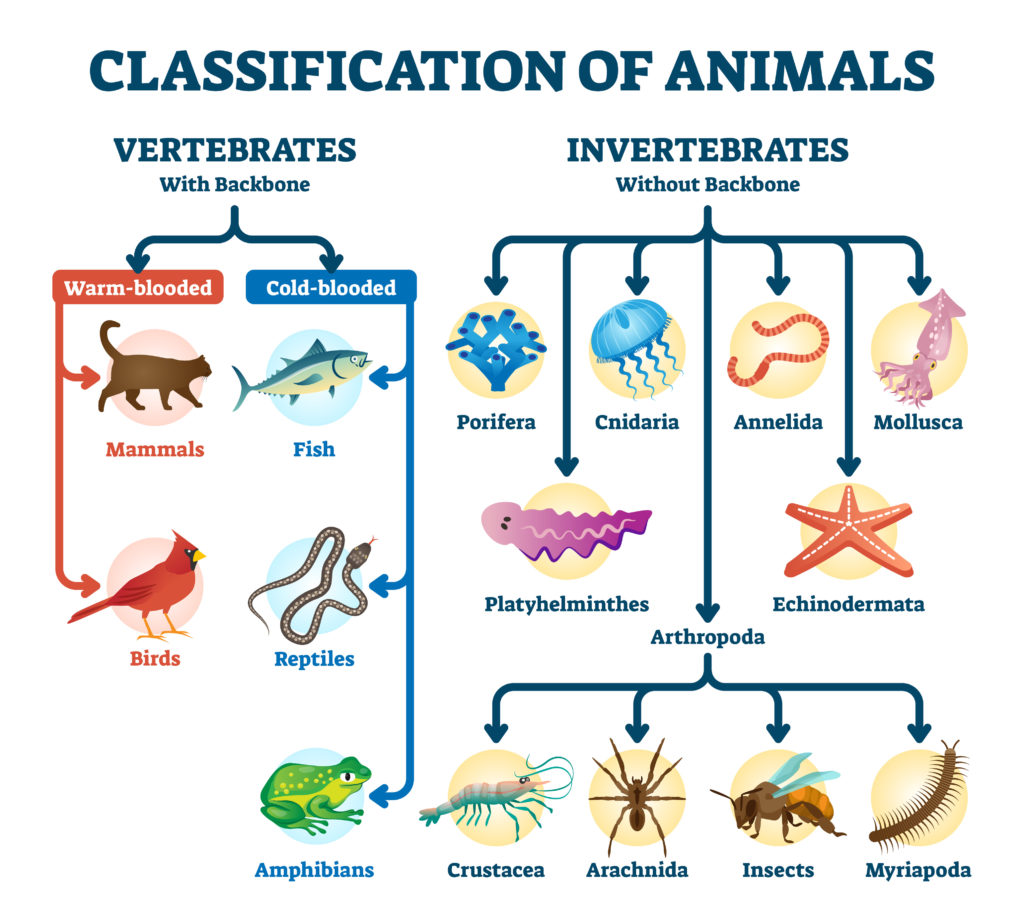The Animal Kingdom
Vocabulary
Can you find where all the definitions are in the text?
Vertebrates
Vertebrates are living organisms that have a backbone.
Invertebrates
Invertebrates are living organisms that do not have a backbone.
Phylum
Phylum is the classification below Kingdom and above Class.
Molluscs
Molluscs are animals that have soft bodies which are often (but not always) covered by a hard shell (e.g., snails, clams, slugs, oysters, nautiluses, octopuses).
Anthropod
An Arthropod is an invertebrate with an exoskeleton, jointed legs, and a segmented body, which includes insects (flies, ants), arachnids (spiders), myriapods (centipedes), and crustaceans (wood lice, crabs).
Crustaceans
Crustaceans are invertebrates that live mostly in water and have segmented bodies, hard exoskeletons, pairs of jointed limbs, and two pairs of antennae (e.g., lobsters, crabs, crayfish, wood lice).
Arachnids
Arachnids are invertebrates that have a segmented body divided into a combined head and thorax (midsection), and an abdomen, and have eight jointed legs, but no antennae (e.g., spiders, scorpions, mites, ticks).
All animals share these characteristics:
- multicellular
- rely on other organisms for food
- can move around or move parts of their bodies to get food
- most need two individuals to reproduce

All animals can be divided into two main groups: vertebrates and invertebrates. Vertebrates have a spinal cord surrounded by a backbone. Invertebrates do not. All vertebrates are in the phylum Chordata, which includes amphibians, reptiles, birds, fish, and mammals. Invertebrates are divided into many phyla (the plural of phylum). These include annelids (worms), and molluscs such as snails and clams. The phylum Arthropod has sub-phyla that contains insects, crustaceans, and arachnids.

Only about 5 percent of animals are vertebrates. How much do you know about invertebrates?
Characteristics of Invertebrates
Phylum/Sub-phylum |
Examples |
Characteristics |
Insects |
• butterfly• ant• grasshopper• fly |
• six jointed legs• three body parts• almost all have wings• exoskeleton (outer skeleton) |
Arachnids |
• spider• scorpion• tick• mite |
• usually eight jointed legs• exoskeleton• two body sections• lay eggs |
Crustaceans |
• crab• lobster• barnacle |
• exoskeleton• two body parts• jointed legs or claws• two pairs of antennae |
Annelids |
• earthworm• flatworm• leech |
• segmented bodies• no limbs• most are covered with short bristles |
Molluscs |
• snail• octopus• oyster |
• soft body• either external or internal shell• some have a foot used for moving, attaching to things, or getting food, while others have eight or more tentacles |
Show What You Know!
Complete some questions about the reading selection by clicking “Begin Questions” below.









